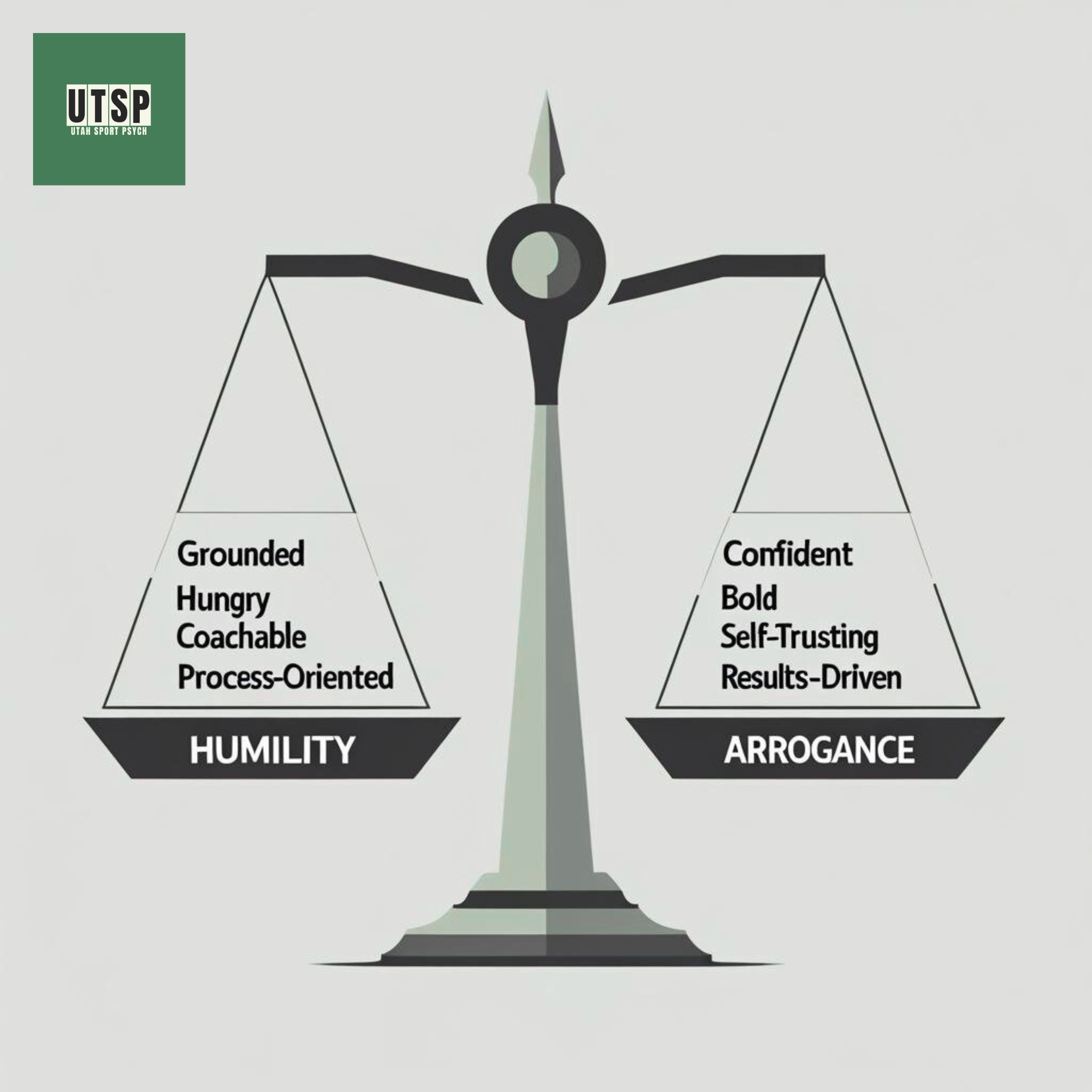Balancing the Scale: How the Greats Walk the Line Between Humility and Arrogance
When you think of the all-time greats—Michael Jordan, Serena Williams, Simone Biles, Tom Brady, Beyoncé, Elon Musk, or Steve Jobs—what comes to mind?
Confidence. Swagger. Precision. Poise.
But also: Dedication. Coachability. Respect for the game.
It’s not a contradiction—it's a balance.
There’s a scale that lives inside every high performer. On one side is Humility—the recognition that there’s always more to learn. On the other is Arrogance—the unwavering belief that you have what it takes to be great.
And the truly elite? They don’t aim to eliminate one side of the scale. They learn how to balance both.
Why the Balance Matters
Too much humility, and you hesitate. You defer. You overthink. You stop shooting your shot.
Too much arrogance, and you dismiss feedback. You burn bridges. You become your own ceiling.
The athletes and performers who rise to the top don’t play it safe in the middle; they deliberately hold tension between both extremes. They cultivate the internal belief that “I can beat anyone,” while never losing the perspective that “I have more to learn from everyone.”
This dynamic tension is where greatness lives.
Visualizing the Balance
Here’s how I like to picture it:
On the left: Humility – grounded, hungry, coachable, process-oriented.
On the right: Arrogance – confident, bold, self-trusting, result-driven.
The goal isn't to settle the scale. It’s to strengthen both sides—like two legs working in tandem to keep you upright while climbing a steep mountain.
An Example from a Military Man
The story of Robert, a former military officer, shows the importance of Balancing the Scale of Humility and Arrogance. As a young officer Robert was bright, eager to please, and eager to learn. He was smart, a hard worker, and did an exceptional job at every task he was given. He was quickly promoted, being seen as the next generation of great military leaders. With every promotion his scale slid further away from humility and closer to arrogance. He was quick to tell people how to do their jobs and slow to ask for feedback of how to do his job better. He was the best. He knew it and he wanted others to know it too.
Eventually his scale became so imbalanced that poor Robert started to fall. In his next command, during a critical exercise he was too busy telling a junior officer how to do their job, he forgot to do his job and the exercise was deemed a complete failure. Demoted, with an opportunity for humility, he doubled down on his own prestige and arrogance. He stopped learning and asking questions about his own job because “he knew it already.” And the hours he had spent as a young officer learning and studying were now occupied by bars and late nights. Eventually he fell into alcoholism, relieved of all commands, divorced by his wife, and withdrawn from his children.
Greatness comes in many ways. But each and every way must come as you Balance the Scale of Humility and Arrogance.
4 Ways to Balance the Scale
Whether you’re an athlete, artist, or entrepreneur, here are two ways to grow each side of the scale.
TO DEVELOP HUMILITY
(1) Seek Out Brutally Honest Feedback
Don’t just ask for feedback—chase it. Ask your coach, mentor, or teammates:
“What’s one thing I’m blind to that’s holding me back?”
Feedback is a gift, even when it stings. It grounds you in reality and keeps your ego in check. The best performers actively recruit people who will challenge them, not just cheer for them.
🔁 Mental Training Exercise: Write down the top 3 critiques you’ve received in the last month. Reflect on what truth they might hold—and how you’re responding to them.
(2) Study People Who Are Better Than You
Watch game tape. Read biographies. Attend clinics. Observe greatness. Not to imitate blindly, but to remember that no matter how good you are, someone is out there better, faster, sharper.
Humility starts with perspective—realizing that mastery is a moving target.
📚 Mental Note: Even Kobe Bryant regularly called Hakeem Olajuwon and Michael Jordan for advice—after he’d already won championships.
TO DEVELOP ARROGANCE
(1) Keep a Personal Hype File
Every time you perform well—hit a big shot, deliver a great presentation, crush a workout—capture it. Write it down. Screenshot it. Record a voice memo.
This “hype file” is your reminder of who you are at your best.
When self-doubt creeps in, arrogance isn’t built on delusion—it’s built on receipts.
💪 Mental Reframe: Confidence doesn’t mean you’re always right—it means you always believe you can figure it out.
(2) Visualize Domination, Not Just Execution
Too many people visualize making the pass or completing the task. Try going one level deeper—visualize dominating. Feel what it’s like to own the moment, to command the room, to impose your will.
Arrogance is often built in the unseen hours—when you start believing that the world is lucky to see what you bring.
🎯 Mental Performance Cue: Before your next big moment, ask: “What would it look like if I totally crushed this?” Then visualize it in detail.
Final Thought: You Can Be Both
You can walk into a room and believe you’re the best one there, while still knowing you have so much to learn.
You can stand on a podium and still be grateful.
You can talk some trash and stay coachable.
The goal isn’t to pick a side. The goal is to learn to switch gears.
So ask yourself this week:
Where do I need a little more humility?
Where do I need to unleash a little more arrogance?
Because greatness doesn’t come from balance.
It comes from balancing the tension.

